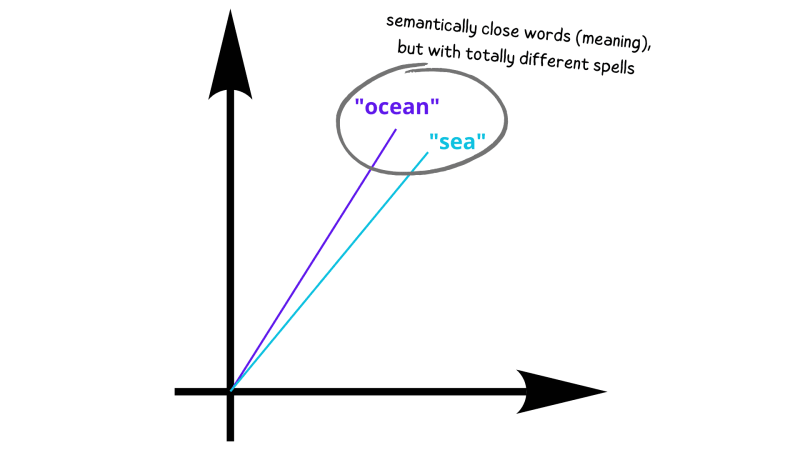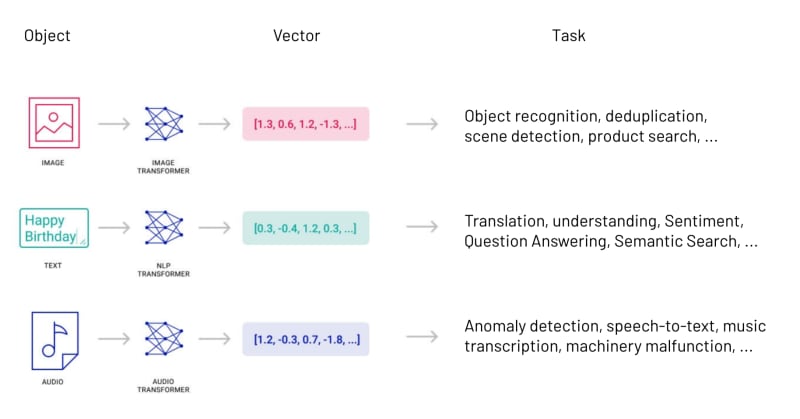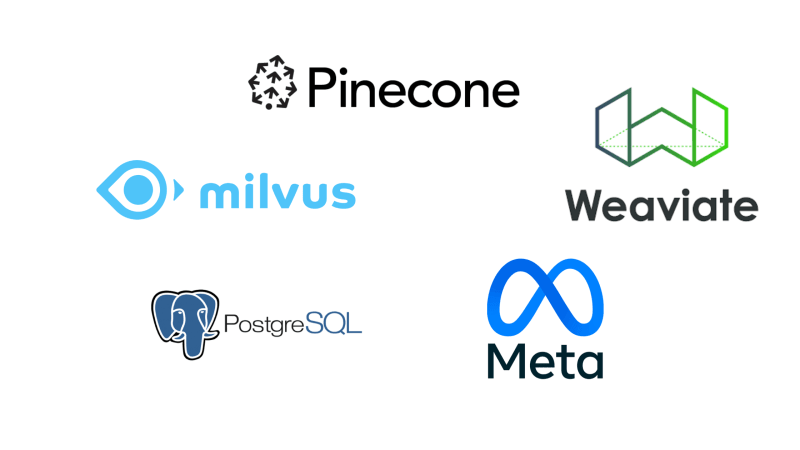With the rise of AI, vector databases are becoming more popular. But what exactly is a vector database and when should you use it?
What is a vector database?
Traditional search engines use full-text search, but NLPs like ChatGPT and Bing AI use semantic search or similarity search, a type of search that considers not only the characters match, but also the meaning of the words. This feature of semantic search is powered by vector databases.
- Recently Google also started using semantic search
Full-text search VS Semantic search
Let's compare these two types of search.
Full-text search
- Search for a word or phrase in large amounts of text
- The search engine returns a list of documents that contain the search term
SELECT title, content
FROM documents
WHERE search_vector @@ plainto_tsquery('english', 'example search');
Semantic search
- Search for a word or phrase in large amounts of text
- The search engine will return a list of documents that contain the search term or have a similar meaning
How does vectorization work?
Vectorization is the fundamental of vector databases, so first we need to understand this technique and its advantages.
NLP Example
A NLP receives a text as input and returns another text as output. This involves several processing steps, one of them is vectorization.
In the vectorization process, the tokens of the input text are converted into vectors using linear algebra operations. Simplifying:
A text becomes an array with numeric values, for example:
"learning NLP and AI" ---> [0.9, 0.02, 0.88, 0.1, 0.3]
The result of this "translation" is called a vector embedding. The vector embedding is a numerical representation of the input text.
It works not only for text, but also for images, audio, and video. Each of these types of data use a different algorithm to generate the vector embedding.
Vectorization algorithms
Images: vgg, resnet, inception, mobilenet, googlenet, etc.
Text: word2vec, glove, fasttext, BERT, node2vec, etc.
Audio: wav2vec, mxnet, etc.
Finally, the vector database!
Now we have a lot of vectors, but these vectors are basically numbers, matrices, they don't mean anything by themselves. So the vector database is used to index these vectors.
The vector database will index the vectors, leaving the vectors with similar values close to each other, this makes it possible to perform a similarity search in the database.
How the vector database knows which vectors are similar?
-
Querying the database using math formulas to find the closest vectors in a high-dimensional space
- Euclidean distance
- Cosine similarity
-
Machine learning algorithms
- K-nearest neighbors (KNN)
- Approximate nearest neighbors (ANN)
Indexing
Examples
Example with football players ⚽
Let's suppose you want to search for the following text:
"Best football player in the world"
You will very likely get results talking about Messi, because currently (2023) he was elected the best football player in the world. But you will also get results talking about Cristiano Ronaldo, Mbappé, Neymar, etc. as they are also very good football players and considered "the best" by many fans.
Performing a semantic search in a dataset
# Load the dataset - 2000 first articles
dataset = load_dataset('openwebtext', split='train[:2000]')
# Preprocess the dataset
texts = [simple_preprocess(article['text']) for article in dataset]
# Train a Word2Vec model
model = Word2Vec(texts, vector_size=200, window=5, min_count=1, workers=4)
# Find the most similar words to "politics", "global", and "economy
similar_words = model.wv.most_similar(positive=['politics', 'global', 'economy'], topn=10)
print(similar_words)
In this code, we are performing a semantic search on the terms "politics", "global", and "economy".
As result, we get the 10 most semantically close terms, with the term and the numerical proximity coefficient.
>>> 10 most similar results to "politics", "global", "economy"
[
('debt', 0.9471450448036194),
('industry', 0.9427266716957092),
('conflict', 0.9362503290176392),
('labor', 0.9333578944206238),
('scientific', 0.9326208829879761),
('investment', 0.9326040148735046),
('capitalism', 0.9312210083007812),
('participation', 0.9291972517967224),
('society', 0.9280529618263245),
('crisis', 0.9253469705581665)
]
Complete code: semantic-search.py











Top comments (4)
Fantastic post, a great explanation!
I prefer the postgres approach since you can also store your non-vector data alongside it in the db for building more complex applications.
bonus: I've found supabase to be a quick way to get started with pg_vector on postgres.
So, now can I change my system to use the semantic search for all search process? :D
Do you know if we could have performance issues related to it?
Good question. Yes, you can do it, but there are some disadvantages that you should consider:
Absolutely amazing